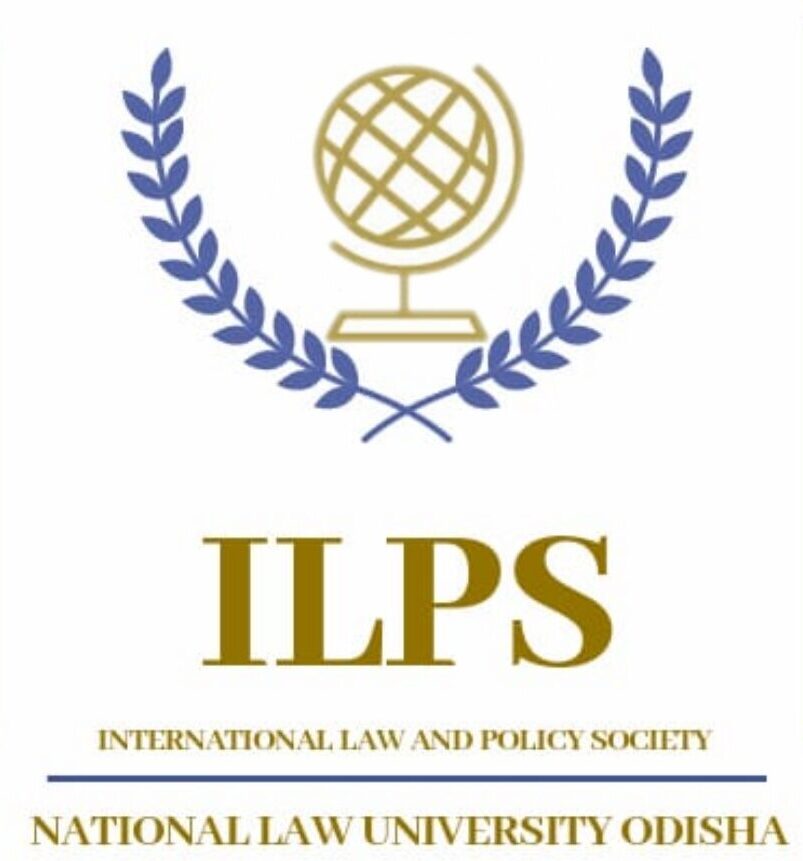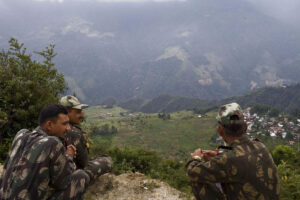Introduction
While mostly obscure to the Western public, the Chinese Maritime Militia is a paramilitary organization under the command of the People’s Liberation Army (PLA) formed by mercantile seafarers and fishermen who are deployed to fulfil national interest missions and conduct state-sponsored activities at sea. Originated in the 1970s as a force of untrained civilians occasionally summoned to guard the coast against foreigners, the Maritime Militia has evolved to become an important tool of the looming Chinese power projection policy, which defies the status quo and the international rule of law in strategic locations.
More specifically, the Maritime Militia partakes in so-called “low-intensity maritime rights protection struggles” designed to advance China’s sovereignty claims in East and South China Sea. Equipped with high-powered water cannons and reinforced steel hulls, Militia vessels spearhead an ‘effective control’ campaign by swarming disputed areas, seizing sea features (islands, shoals, rocks, and low-tide elevations), engaging in harassment of foreign vessels, and performing ISR missions (intelligence, surveillance, and reconnaissance) – as documented by Erickson, Kennedy and others.
After the South China Sea Arbitration (Philippines v. China, PCA) legally thwarted China’s unabridged sovereignty claims over the nine-dash area, the Militia intensified its activities to revamp China’s poorly received “historical rights” narrative and implement Realpolitik changes to the maritime scenario. The Militia has been linked to a number of contentious events in South China Sea: in March 2020, Chinese fishing boats rammed and sank a Vietnamese vessel with eight crew members onboard and helped to establish artificial islands (alleged “research stations”) on Fiery Cross and Subi Reefs. In March 2021 more than 200 Chinese fishing boats swarmed and allegedly attempted to occupy Whitsun Reef, a Philippine possession in the Spratly Islands. Reports suggest that over the last decade the Militia participated in key operations that include the harassment of USNS Impeccable (2009), the seizure of Scarborough Reef (2012) and the blockade of Second Thomas Shoal (2014).
In this respect, the author argues that the Maritime Militia must not be regarded as an independent non-state actor under international law, but rather as a state-organized and controlled entity for whose international misconduct China must be held accountable. Additionally, the author emphasizes that legal rights shall not derive from illegal actions (ex injuria jus non oritur), and that a collective call must be made to hamper the “territorialization” of the high seas.
A ‘Double-Hat’ Dilemma: Between Soldiers and Fishermen
Because Militia members are essentially civilians until commanded to ‘wear the military hat’, they are uniquely suited to sustain China’s grey zone tactics: the identity trick blurs China’s direct link to international law violations and allows for undercover state-commanded hostilities to take place without crossing the threshold into conventional aggression. At first glance, the absence of uniforms and badges provide grounds for its maritime misdeeds to be framed as private actions, shunning state involvement while preserving the “sovereignty benefits” that may arise. However, appearances are misleading in this case, and the double identity ploy is no fortunate accident.
Establishing China’s Responsibility for Maritime Militia Activities in Violation of UNCLOS
The 1982 United Nations Convention on the Law of the Sea (UNCLOS) is a comprehensive compilation of the modern law of the sea. Not only does it codify numerous customary norms, but also progressively develops legal concepts that confer stability to the international marine order. As a state party to UNCLOS, China’s conduct on the high seas is conditioned to certain legal standards that can be translated into concrete duties.
In the present case, China is bound to respect the freedoms of navigation and fishing of foreign vessels (Articles 87.1 and 87.2) while effectively monitoring ships flying the Chinese flag in order to ensure their compliance with generally accepted regulations pursuant to the safety of life at sea and the prevention of collisions, such as IMO’s SOLAS and COLREGS (Article 94.4.c). Hostile behaviors and militarization efforts are precluded as they are incompatible with the reservation of high seas for peaceful purposes (Articles 88 and 301). Additionally, UNCLOS expressly determines that all claims of sovereignty over the high seas are invalid (Article 89), while putting forth that maritime torts and the abuse of conventional rights (Article 300) shall trigger liability (Article 304).
Even though swarming initiatives and ISR missions (excluding espionage) do not seem to fall under the scope of UNCLOS prohibitions, legal grounds that justify the harassment of foreign vessels are nowhere to be found. Maritime Militia’s aggressive ramming of vessels to push them away from China’s alleged “sovereign waters” – located way beyond 200 nautical miles from the Chinese baseline – completely disregard UNCLOS provisions. Seizure operations targeting high seas features, on the other hand, are simply unfit to generate sovereign rights, no matter how many man-made structures are built on top of them.
As such, Maritime Militia activities often amount to international law violations or incompatibilities. Championing violent sovereignty-assertion operations that result in property loss, freedom impairments and life danger to third-party sailors is an UNCLOS-violating attitude that must not be tolerated. It is important to emphasize that Chinese national security laws cannot be used as grounds for conduct justification since its extraterritorial ambition is incompatible with the existing international regime of the high seas. The Lotus principle does not favor China in this case.
To foreign ships transiting hot areas, the Maritime Militia would likely bear resemblance to ordinary fishermen: unarmed folks sailing private vessels and wearing civilian apparel – so why should China be held accountable for their actions? Under customary international law, the responsibility of a state is normally limited to acts of its organs and agents exercising public authority. However, there are a few circumstances in which private conducts may be attributable to a state, as codified by International Law Commission’s Articles on the Responsibility of States for Internationally Wrongful Acts. Article 8 reads:
The conduct of a person or group of persons shall be considered an act of a State under international law if the person or group of persons is in fact acting on the instructions of, or under the direction or control of, that State in carrying out the conduct.
The rationale behind the attribution exception is that, while acting under the effective control of the state, the non-state actor becomes its ‘extended arm’ and therefore the state must be the one to bear the consequences. The strict control test used by the International Court of Justice in Nicaragua and Bosnia cases complements the requirement set by establishing the need for material dependance between private actors and the state.
The PLA generally avoids any official connection with the Militia, denying at times its existence, which makes its status within Chinese bureaucracy somewhat controversial. There is, however, a compelling body of evidence available in open-access sources indicating that the Militia is organized, controlled, funded, and trained by China.
1. The Central Military Commission’s National Defense Mobilization Department, headed by PLA Generals, initially sets out work policies for the Militia. Then, PLA Provincial Military Districts send their Militia force requirements to the provincial governments, which plan and fund the construction of Militia units in accordance with their social and economic plans. The local PLA commands (Military Subdistricts and others) then organize, train, and direct Militia operations on a regular basis. This organized chain of command (here, p.8) helps ensure the ‘Party control of the gun’.
2. Both central and provincial governments provide funding for the Militia. To make such risky activities viable, government representations cover lost wages or damages incurred by Militia personnel and offer different remuneration plans that include pensions, social benefits, and subsidies to equip ships, buy fuel and establish presence in distant waters (here and here). Without such incentives, provided exclusively by the Chinese state, Militia activities would not be possible, so the material dependance requirement is duly fulfilled.
3. Leading Militia units receive joint military training with China’s Navy and Coast Guard – and do so in their own Militia military uniforms. Special Militia detachments are trained to guard the Chines coast and provide support for naval combat operations, drawing heavily upon retired or relocated Navy personnel. The competence repartition structure among Navy, Coast Guard and Militia is gradually overlapping to a degree that the status of the Maritime Militia as a regular force is becoming a de facto reality.
Therefore, it seems adequate to sustain that the Phosphates in Morocco requirements for international responsibility have been met, since (i) there is a conduct attributable to China under international law, consisting in effectively directing a non-state actor (ii) in breach of international obligations arising from UNCLOS and its corollary regulations.
Final remarks
As the Maritime Militia becomes more professional and institutional, double-edged consequences follow. New equipment and training improve command, control, and coordination of Militia units. But collaterally, the resulting sophistication makes the Militia more identifiable as a state-sponsored actor, undermining its ability to function as a gray-zone force. At this time, the ‘double-hat dilemma’ has been tackled, and the appearance game can no longer thrive. China’s undeniable control over the Militia showcases how the country is exceeding its geographic and substantive entitlements under UNCLOS, an attitude that generates state responsibility and entails compensation for affected nations. Such a dangerous precedent calls for collective action if the rule of law on the high seas is to be restored, otherwise the reversal of fait accompli situations may soon become unfeasible.
Victor S. Mariottini de Oliveira is a Brazilian lawyer and an LL.M. candidate in International Law at the Graduate Institute for International and Development Studies, Geneva



